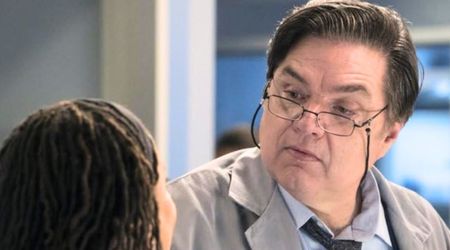'The UnXplained: Superhuman Senses': Our reality is grounded in human brain’s guesses based on sensory inputs

The latest episode of History's 'The UnXplained' on 'Superhuman Senses' looks at a wide variety of ways in which our brain can perceive the world depending on how it processes the "data" it receives from our sense organs.
We realize that so much depends on the sensitivity of these sense organs and how our brains are wired. Experts on the show describe the brain as being shut in a black box - our skulls. It does not directly access any phenomenon -- thus how we perceive 'reality' is entirely dependent on what electrical signals it receives from the sense organs and how these signals then travel through the brain's malleable wiring that often see one part of the brain take up functions of another part.
Most of the case studies on this episode, while unusual, are all still in the realm of possibility. But towards the end, when the scientists are exploring "paroptic sight" that refers to people 'seeing' color by touching them with their fingers that you start wondering about the nature of the reality we perceive.
According to scientists, animals have extraordinary senses sometimes and they have six or seven different forms of perception very different from us. Thus what they see and what we see are very different. This makes it a miracle in a sense that so many of us, more or less, agree on how the world looks to us.
But that also creates the hubris that what we see is 'real' instead of our brain taking guesses at what reality actually looks like based on what our limited senses are telling us. With 'finger-vision' for instance, people are reportedly feeling the heat signatures of these different colors to tell what shade it is.
It seems impossible until we think of how bees can see in the ultraviolet spectrum (that humans can't) but can't see the color red. The show goes a step further in exploring this idea by explaining that the color red doesn't actually exist. Light gets refracted at certain angles when it hits an object, allowing our pupils to collect only certain wavelengths that our brains then process and perceive as color. Think of that when you are picking up a red apple from a supermarket aisle next time or admiring a sunset.
Another scientist blows our mind yet again when he says that we might have senses that we are not even aware of because we don't use them actively. This might explain the phenomenon of some "gifted children" who can "see" blindfolded, reading books, seeing shapes and color on cards held up in front of them. Since we have no idea what ways of sensing we discard as we grow from babies to adults, there might be ways of perceiving the world that we still haven't explored.
And this is the most intriguing part of 'Superhuman Senses'. If we are "guesstimating" our reality based on data points inputted by our senses to our brain, what if we received more data points? If we trained our senses to receive more information or developed additional senses, how would we see the world? What would a more complete picture of "reality" look like?
'The UnXplained: Superhuman Senses' aired on July 18 at 9 PM on History channel.










